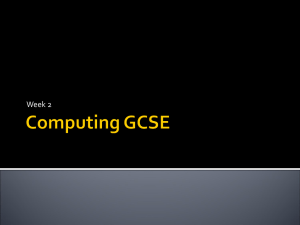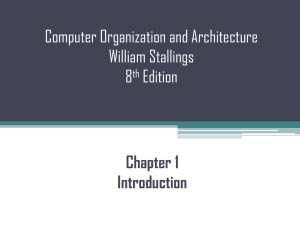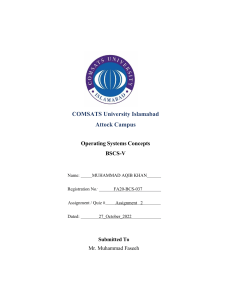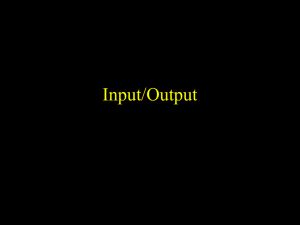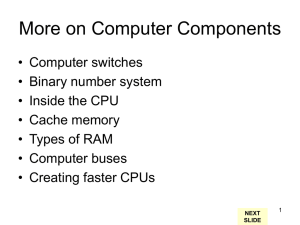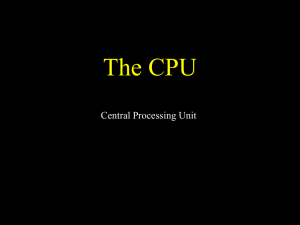Instruction Sets
advertisement
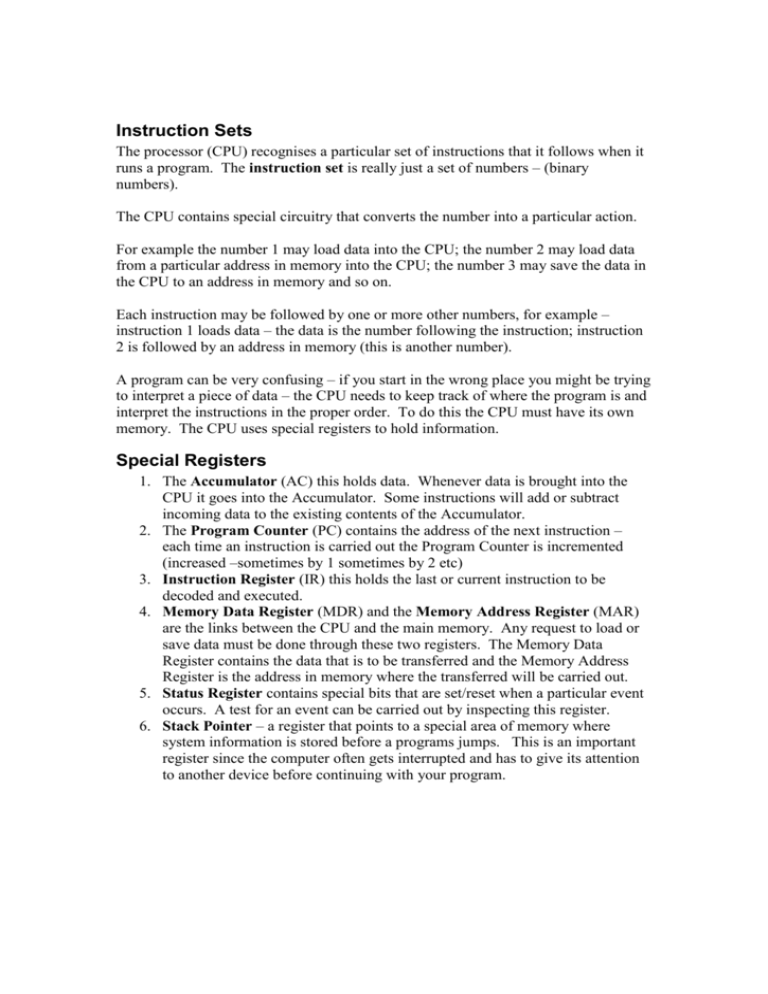
Instruction Sets The processor (CPU) recognises a particular set of instructions that it follows when it runs a program. The instruction set is really just a set of numbers – (binary numbers). The CPU contains special circuitry that converts the number into a particular action. For example the number 1 may load data into the CPU; the number 2 may load data from a particular address in memory into the CPU; the number 3 may save the data in the CPU to an address in memory and so on. Each instruction may be followed by one or more other numbers, for example – instruction 1 loads data – the data is the number following the instruction; instruction 2 is followed by an address in memory (this is another number). A program can be very confusing – if you start in the wrong place you might be trying to interpret a piece of data – the CPU needs to keep track of where the program is and interpret the instructions in the proper order. To do this the CPU must have its own memory. The CPU uses special registers to hold information. Special Registers 1. The Accumulator (AC) this holds data. Whenever data is brought into the CPU it goes into the Accumulator. Some instructions will add or subtract incoming data to the existing contents of the Accumulator. 2. The Program Counter (PC) contains the address of the next instruction – each time an instruction is carried out the Program Counter is incremented (increased –sometimes by 1 sometimes by 2 etc) 3. Instruction Register (IR) this holds the last or current instruction to be decoded and executed. 4. Memory Data Register (MDR) and the Memory Address Register (MAR) are the links between the CPU and the main memory. Any request to load or save data must be done through these two registers. The Memory Data Register contains the data that is to be transferred and the Memory Address Register is the address in memory where the transferred will be carried out. 5. Status Register contains special bits that are set/reset when a particular event occurs. A test for an event can be carried out by inspecting this register. 6. Stack Pointer – a register that points to a special area of memory where system information is stored before a programs jumps. This is an important register since the computer often gets interrupted and has to give its attention to another device before continuing with your program. Fetch-Execute Cycle Start Any instructions to execute? Yes Fetch next instruction Decode instruction Execute instruction No Any interrupts? Yes Transfer control to the interrupt handling program What Happens During the Fetch Phase? 1. The Program Counter contains the memory address of the next instruction. 2. This is passed to the Memory Address Register so that the contents of that memory address can be read. 3. The contents of that memory address are passed to the Memory Data Register. 4. This register now contains the instruction and must be passed to the Current Instruction Register so that it can be Decoded What Happens During the Decode Phase? 1. The Current Instruction Register uses special circuitry to decode the instruction. 2. The Program Counter in incremented so that it points to the next instruction. What Happens During the Execute Phase? 1. Data may move between registers and the Accumulator etc 2. Data may need to be read or stored in memory, in which case the Memory Address Register and the Memory Data Register will be involved again. System Bus As the program is running the CPU controls the movement of data etc. The system bus is made up of 3 main parts. Data Bus all the data travels via the Data Bus this may be a width of 64-bit depending on the computer. Address Bus contains the memory location information often 32-bits wide. Control Bus the CPU needs to control all the devices connected to the CPU. It does this via the Control Bus. One of the major tasks of the Control Unit is to keep time. (Not the Date and Time) but more like a conductor in an orchestra.




